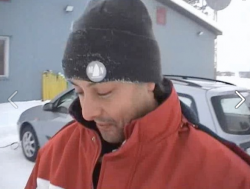raffaele.battaglia
About
- Username
- raffaele.battaglia
- Joined
- Visits
- 198
- Last Active
- Roles
- Administrator, Moderator
Comments
-
It is a pleasure. You should elaborate the data via firmware and software. Both are open-source, so, you can analyze them freely: https://openqcm.com/openqcm-q-1-software
-
You are welcome and thank you too, for your interesting question. I believe that the best way is to share with you the circuit schematic of openQCM Q-1, so you can verify all the differences.
-
Sorry, I hadn't noticed that you had already included the AD8302. Did you follow the same circuit that I attached? It could be that the calibration (peak detection) intercepted a secondary peakRetry
-
Hi Narren, The reason why we obtain a curve like the red one is due to the use of an additional component: AD8302 (https://www.analog.com/media/en/technical-documentation/data-sheets/ad8302.pdf), using the configuration shown in Fig. 4. Basically, …
-
Hi Sujay, Each resonance curve is built point by point by sweeping in frequency around the fundamental and overtone harmonics. Once the whole curve is recorded in a buffer, the Frequency is measured using a peak detection algorithm.
-
You're welcome, and thank you as well for following us!
-
Hi Dzerzi29, We are pleased to inform you that the new electrochemical module will indeed be compatible with the existing openQCM Q-1. In fact, it has been designed specifically with the goal of ensuring seamless integration with the current openQCM…
-
You are welcome and thank you too!!!
-
Hi huijeanlim, regarding your question, in principle, it is possible to use NEXT electronics with the configuration you showed me (by connecting the right quartz electrode as working). Anyway, actually, in my opinion, it is not possible to use our d…
-
Hi imjustakay, because you are using a Wi2, you don't need to do anything because this device is based on a Teensy 3.2. As a consequence you can use quartz sensors with higher frequencies, without problems. The 8 MHz limit was valid only for the old…
-
I am so sorry, Marco (that developed the SW) referred to me that in the exe version this is not possible! Sorry again. My mistake!
-
Hi @Vince90. First sorry for my reply delay. You should find the same files in the exe version.
-
You are welcome and thank you too!
-
Hi @huijeanlim.... first sorry for my reply delay. The discussion is more complex than it seems. So, it is better to describe how the temperature affects the frequency baseline behavior. So, in order to exploit the piezoelectric properties of quart…
-
Hi @huijeanlim, did you intend the "zero" point Temperature?
-
Great @huijeanlim ... your approach is absolutely correct!
-
Hi Vince90, I do not if huijeanlim will answer and how he performed the calibration. Anyway, a temporal lag can be due to the distance from the QCM sensor from the T sensor. As matter of fact each system has its proper thermal inertia. I can only sa…
-
Your comments are very very interesting!!! Anyway, we are sorry for our reply delay, but in this period we are launching the new openQCM NEXT, so it is a challenging time. Because we believe that your excellent contribution needs a detailed discussi…
-
Dear huijeanlim, Unfortunately, we tried with the Q-1, but it has hardware "too slow" to acquire simultaneous overtones measurement. For this reason, we design a new device "openQCM Next" that will be launch in January.
-
Hi Ohad, Because Marco already replies to you by email, I will report the section related to this discussion: Actually we're working both on software and electronic development of the openQCM Q-1 device - software: major change of python software, …
-
Hi Hui. Thank you very much. I just found your email. We will analyze you data and I will reply as soon as possible. Thank you again!
-
Hi huijeanlim, could you share with us the data file? Please, if possible, write privately to us at info@openqcm.com. Furthermore, did you verify the presence or not of bubbles?
-
Absolutely possible! Marco will explain to you how to do this.
-
-
You are welcome!
-
Are you using wrapped electrodes?
-
Hi Bea2020, you can buy pogo pin here: https://www.mouser.com/ProductDetail/581-709150001050006
-
You are welcome and thank you too!
-
Hi huijeanlim, regarding your question, each quartz has a T-freq dependance. This is due to the variation of the wave propagation along with the quartz thickness. Anyway, it is important to underline that every single quartz has a different T behavi…
-
Hi SamB, sure, we will share the code here for who will be interested.

